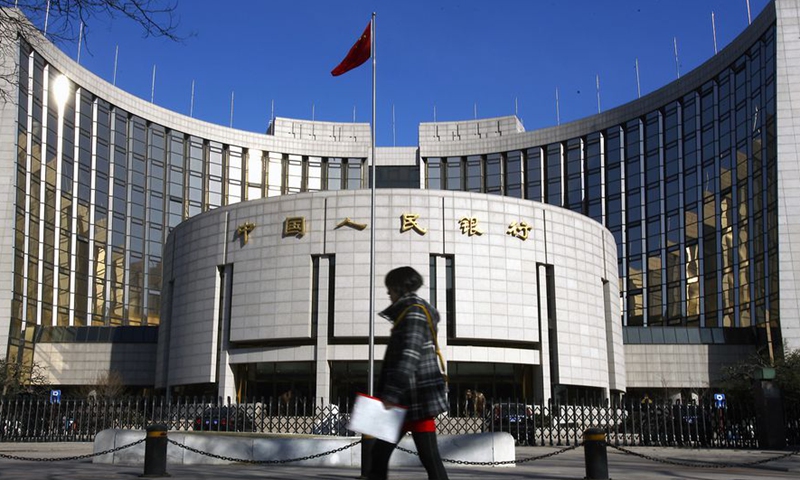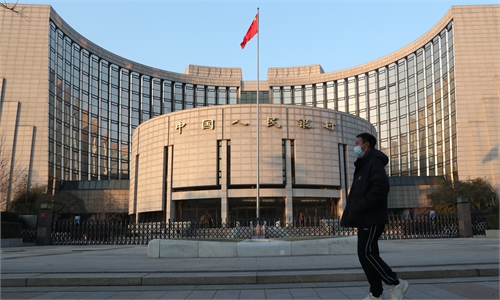
A file photo shows a pedestrian walks past the headquarters building of the People's Bank of China in Beijing, capital of China. (Xinhua)
China has more leeway in anchoring its monetary policy in 2023 as the country will likely trend toward “easing” on the basis of a prudent stance, an economist said over the weekend, noting that the housing market could remain a drag on growth.
A loose monetary policy on the basis of a prudent stance is expected to prevail next year, said Lian Ping, president of the China Chief Economist Forum, speaking of greater leeway to further ease monetary policy in 2023. He made the remarks at the annual conference of the China Chief Economist Forum in Shanghai.
The economy could face persisting downward pressure in 2023, Lian said.
More specifically, multiple pro-growth policies having been announced will gradually take effect, possibly resulting in a slow rebound during the first and second quarters in 2023. Nonetheless, a downturn in the housing market since the beginning of 2022, compounded by the fallout of the epidemic, suggests a potentially extended process for the sector’s stabilization, he said.
Also, the world economy is estimated to continue a downward spiral next year, with Europe, Japan and the US facing a possible recession. This means exports might become a negative contributor to China’s GDP growth in 2023, Lian explained, forecasting a continued proactive fiscal policy to prop up the economy in light of varied uncertainties next year.
Multiple headwinds weighed on the economy in 2022. The economy expanded by 3.9 percent in the third quarter, official data showed, while economic growth for the first three quarters of 2022 came in at 3 percent year-on-year.
A proactive fiscal policy necessitates a supportive monetary policy, Lian said, in anticipation of more monetary leeway, a scenario underpinned by domestic inflation that’s set to remain well under control and a more neutral monetary stance by the US Federal Reserve next year.
The Fed has announced six rate increases so far this year, hiking its benchmark interest rate by more than 300 basis points at a speed rarely seen in history.
In addition to possible additional cuts in reserve requirements, structural monetary policy tools such as relending and rediscount operations are on the cards, he said.
The People’s Bank of China (PBC), the country’s central bank, announced on Friday a 25 bps cut in reserve requirement ratios (RRR) for financial institutions, effective on December 5, in a move to release long-term capital of around 500 billion yuan ($69.7 billion).
The previous RRR reduction, also a 25 bps cut, was taken in April when the central bank intended to release 530 billion yuan of long-term capital into the market.
Global Times


